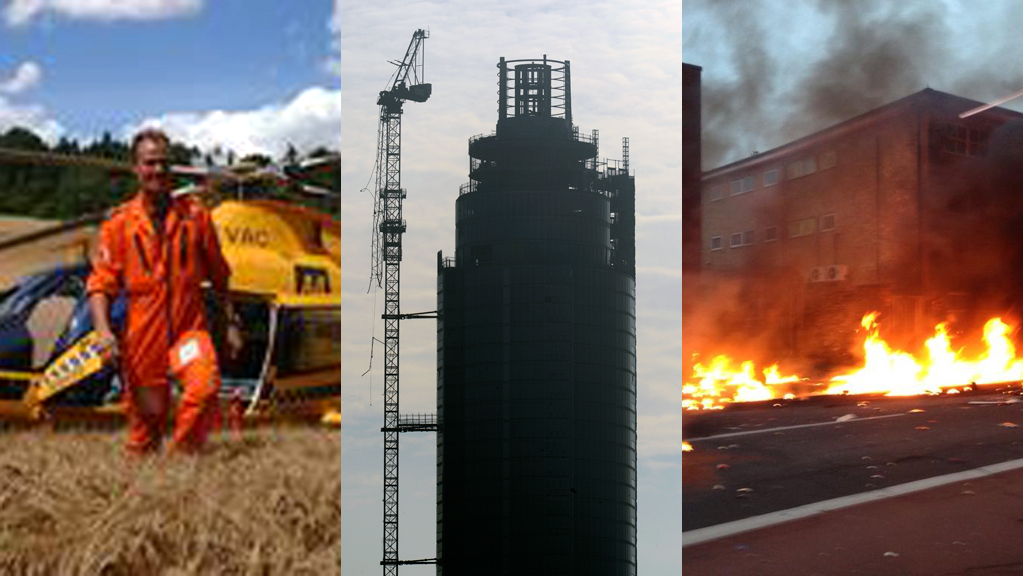Helicopter crash pilot ‘told not to take off’
A pilot whose helicopter crashed in central London, killing himself and a pedestrian, was twice advised not to take off by the client who was concerned about the weather.

Pilot Pete Barnes (pictured above left) died when his helicopter clipped the high-rise crane on The Tower at St George Wharf, central London last week. A pedestrian Matthew Wood, 39, was also killed by the falling debris as he walked to work.
A report into the incident by the Air Accidents Investigation Branch (AAIB), published on Wednesday, found that the client due to be picked up by Mr Barnes in Elstree had suggested at 7.18am that the journey be postponed because of poor visibility.
The account of the incident by the AAIB also found that the crane on top of the tower was not visible because of heavy cloud, and recounts the last conversation Mr Barnes, 50, had before the helicopter crashed.
Read the full Air Accidents Investigation Branch report here
Mr Barnes was embarking on a commercial flight from Redhill Aerodrome in Surrey to Elstree on the morning of 16 January. The passenger – an unnamed businessman – called the pilot for the second time at 7.31am as he was driving to Elstree, to repeat his concerns over the weather, and suggested the pilot wait.
But Mr Barnes, who had 25 years of flying experience, replied that he had already started the engines and was ready to take off from Surrey.
Diversion to Battersea
After leaving Redhill, Mr Barnes arrived at Elstree at 7.46am, but was unable to land. He began to make his way back and requested to land at London Heliport in Battersea, London.
He was told the heliport was open, and replied: “If I could head to Battersea that would be very useful,” the report recorded.
Just 15 seconds before hitting the crane, air traffic control told the pilot: “Battersea diversion approved, you’re cleared to Battersea.”
His final words in a radio conversation to air traffic ground control were: “Thanks a lot”.
The report found that the exchange ended at 7.59.18am when the helicopter was around 150 metres south west of Vauxhall Bridge.
“Immediately afterwards the helicopter began to turn right,” the report read. “At 07:59.25am it struck a crane on the south side of the river 275 metres from the south west end of Vauxhall Bridge.”
‘Freezing fog’
The report also found that another pilot, who was aware of the journey planned by Mr Barnes, sent him a message which read: “Give me a call as I have checked weather and freezing fog around at the moment.”
At the time of the crash, the Met Office recorded poor visibility and low clouds, and eyewitnesses said the crane was not visible on the morning of the crash.
However the Civil Air Authority told Channel 4 News that although lighting on cranes is a legal requirement, the specifications are designed with night time flying in mind and that crane lighting is not required to be visible through fog.
Mr Barnes, a father of two from Berkshire, had flown as an air ambulance pilot and in several films during his career including Oscar-winning Saving Private Ryan and Tomb Raider II.
-
Latest news
-
Putin meets Xi in Beijing amid widening gulf with West3m

-
Starmer sets out six first steps for a Labour government7m

-
Expert pool of police officers is an ‘absolute game changer’ when investigating rape, says home secretary6m

-
Operation Soteria – what happens when rape victims are supported?15m

-
Are Labour and Tories in election mode? | The Political Fourcast35m

-




